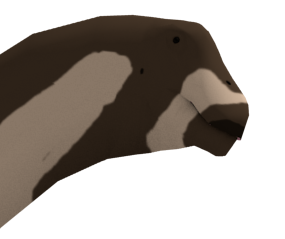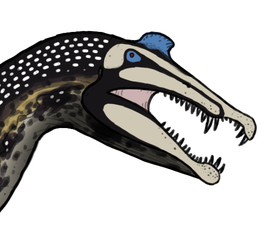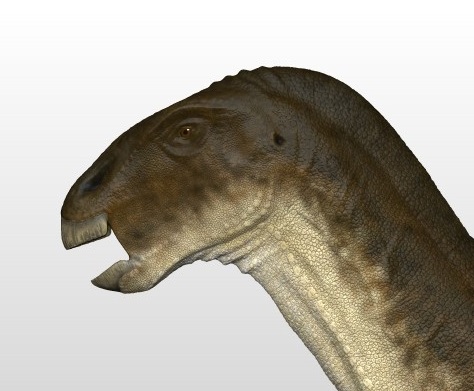When talking about the Cretaceous, the word of the day is "weird"
As the continents took their more modern forms, plants and animals
became more and more specialized to cop with the changing
conditions.
Our first animals to cover are the titanosaurs. Now while sauropods
are big, these critters took it to a whole new level, with many of
them reaching 30+ meters in length.
For example, here's an Argentinosaurus, one of the largest
animals to have walked the Earth with a person for scale

Animals such as Spinosaurus and Lurdusaurus were
becoming specialized for a more aquatic lifestyle


The dromaeosaurs (sickle-clawed, bird like carnivores) were becoming
a force to be reckoned with in the world of dinosaurs.
Below: Utahraptor, the biggest of the raptors
The ornithopods (beaked herbivores) were also running riot in North
America, Europe, and Asia with their ability to process vegetation
in an efficient manner
But it was by the end of the Cretaceous that dinosaurs have reached
their most amazing forms.
Animals like the hadrosaurs were as common out West as wildebeest
and zebra are on the Mara plains of Africa
Of course, there's one animal from the very end of the Cretaceous
that's one of those special dinosaurs where an introduction is
redundant.
I give you the Tyrannosaurus rex
There's not much I need to say about this animal so I'll just
throw some stats to give you an idea about this creature
- 12 meters in length
- 4 meters at the shoulder
- 8 tons in weight
- Binocular vision that trumps that of eagles and hawks
- 4 to 6 tons of bite force
- a top speed of 20 miles per hour
So basically, not the kind of animal you want to encounter unless
you have an elephant rifle on hand
Now since we don't have dinosaurs around us today (excluding birds),
it's safe to assume that they're extinct
The tl;dr of it is that because of volcanic activity in India,
biodiversity took a dip at the very end of the Cretaceous.
To make thing even better, a 6 mile wide asteroid decided to crash
itself into what's now Mexico and cause mass ecological havoc

So as you could imagine, such specialized animals couldn't cope with
the changes and quickly perished, leaving the world open for a new
range of species, including our ancestors, the mammals.



